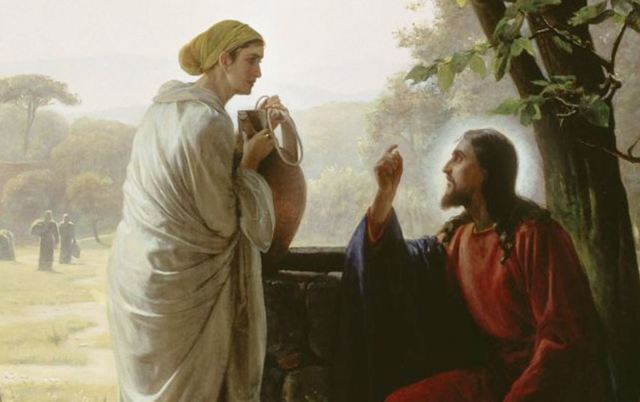In every aspect of Christ's ministry on earth and in heaven, women have held a prominent role as witnesses and receivers of His divinity and grace. Eve knew, worshipped, and offered sacrifices for the premortal Christ. Mary brought the Son of God into this world. The Samaritan woman witnessed Christ's first recorded declaration that He was the Messiah of the world. Mary and other women witnessed our Savior at the tomb after His resurrection. The angel Moroni showed Mary Whitmer the gold plates, allowing her to be a witness of their truth. Clearly, women hold a significant and sacred role in the eyes of our Savior and in His ministry. Camille Fronk Olson speaks of this role in her book Women of the New Testament.
In a bold disregard for male superiority, the Savior was not ashamed to describe Himself by using feminine images. He is the mother hen yearning to protect her own under her ample wings if they will come to Him in faith (Matthew 23:37; Luke 13:37), and the woman who searched her house until she found the lost coin (Luke 15:8–10). He invited all who were thirsty to come to Him and drink from His koilia (John 7:37–38), an interesting but debated image. The term refers to a “hollow of the body” and is typically translated as “belly” or “womb.”
Consistently, the New Testament portrays women as abundantly capable of understanding doctrine, receiving revelation through the Spirit, and nurturing testimony in others. And they were intricately involved in the most significant moments of Christ’s mortal ministry. . . .
In John’s record, the Savior first confirmed to an unnamed woman in Samaria that He was the Christ. Jesus seemed to orchestrate His timing and route to encounter this woman at the well, traveling right through the middle of Samaria rather than taking the alternate route through the Jordan Valley. He met her before she had even heard of Him. She saw only a thirsty man sitting at the well.
In leading their discussion, Jesus created an environment that enabled the woman to learn His identity. Learning truth necessitates the tutelage of the Holy Ghost, whose mission is not to speak of himself but to bear witness of Christ and guide us to the truth (John 16:13). That is precisely what the Holy Ghost did for the woman at the well. She carefully listened to Jesus, but it was the Holy Ghost who revealed the messianic thread throughout His teachings. Once taught by the Spirit, she began to put it all together and professed, “I know that Messias cometh, which is called Christ: when he is come, he will tell us all things” (John 4:25).
Then, and only then, did Jesus unequivocally declare Himself the Messiah. The King James Bible records the Savior’s response as “I that speak unto thee am he,” (John 4:26). As soon as the woman received the confirming witness, she “left her water pot, and went her way into the city, and saith to the men, Come, see a man, which told me all things that I ever did: is not this the Christ?” (John 4:28–29).
Much can be learned from the fact that Jesus selected a marginalized Samaritan woman to learn truth from the Spirit and proclaim that truth to others by the same Spirit. In nearly every way she is an anomaly among the recipients of revelation. The woman at the well was a woman and a Samaritan, a double reason to be labeled unclean by the Jews. With her unsavory past, she would have received no respect in any community. This woman, who does not even have a name in our scriptures, opened her mind and heart to be spiritually taught. She who had neither title, nor position, nor formal education, nor a stainless past could see the thirsty stranger as He truly was: the Savior and Redeemer of the world.
Life-changing revelation came to her, revelation as profound as we find in scripture. But her conversion was not in the dramatic fashion of Alma the Younger or Saul on the road to Damascus. In a quiet and contemplative way, the Samaritan woman received a clear witness while in the midst of doing ordinary household chores. In her humble way, she encourages any who feel disenfranchised to trust in the Lord’s invitation to drink from His living water and experience His love and power to save them.
Read more powerful examples of our Savior's interaction with women here.
Lead image Woman at the Well by Carl Heinrich Bloch, Wikimedia Commons.
Find many more fascinating insights like these in Women of the New Testamentby Camille Fronk Olson. Now available at Deseret Book anddeseretbook.com.



